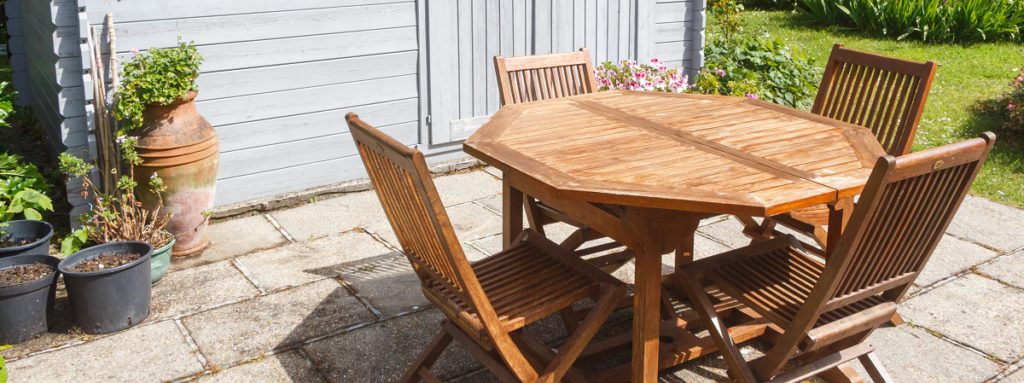Oil finishes are popular for reviving wooden furniture since they protect the wood while also enhance its natural beauty. Oil penetrates easily, is long-lasting (it resists water and alcohol), and adds a natural sheen and texture to wooden furniture. Please note that wood finishes such as wood oil cannot be coated with varnish or paint.
Wood with an oil finishing is resistant to contamination by things like tea, coffee, water and wine juice. It is also made from plant material, which means it can be safely used with children, pets and plants. Wooden furniture for outdoor use, such as Weimans Lemon Wood with Oil Finishing, has UV protection that prevents discoloration, fading and drying.
If you want your household furniture to be finished with a natural oil that reinforces the normal wood color, wood oil is your best supplement. Timber oil and other outdoor furniture oils provide wood oils for a better coating of your furniture. The oil used for outdoor wooden furniture ensures maximum satisfaction, and it is a quarter of sealed and preserved marine teak.

All natural oil is protected by aluminum-coated cans for further use. Wood oil brings out the natural beauty of the wood itself and provides a protective layer. Oil finish has many advantages as it is easy to process and maintain, it penetrates the wood surface and provides a beautiful finish.
Osmo Express, for example, is a hard-wax oil that produces a wood finish that combines the benefits of natural oils and waxes in a fast-drying product. Hard wax oils give your hardwood floors and interior furniture a superior finish. Hardwood oils form a permanent barrier between softwood and hardwood against water, stain, heat, dirt and wear.
Olive oil can be used to polish wood to give it a fresh and rejuvenating appearance. For chairs, tables and wooden storage boxes you can use olive oil or use it as a varnish.
Let the oil coat dry and apply over the next week, first several layers, then later layers. Rub additional layers of oil onto the wood and wipe off any excess oil. Once the excess oil has been removed from the oil, you can use linseed oil, which is a thin film of oil on the surface of the wood.
For a smoother, richer finish, repeat the process, this time sanding the wood using fine, wet, and dry sandpaper. This results in a slurry of oil and wood dust filling the surface’s small pores.
Since it is soap oil, we recommend not to use unfinished or unsealed wood. It is a paint job, so you cannot use furniture oil. To give the oil the necessary color, use a light wood that matches the darker wood (cedar, for example, or dark pine).
If you need to revive and maintain your old furniture, you can buy oil soap for wood finishing. This oil cleans wood and can be used to wash and brighten furniture surfaces. If you want to oil your wood surfaces, make sure that the furniture is well prepared.
Weimans Lemonwood Oil is a good choice as it can be applied on any wood surface. It is made from lemon oil and when applied to the wood sinks and prevents the wood from drying out. It can easily be used as a quick-drying furniture oil to sink the wood and provide a beautiful finish.
Linseed oil is a slow-drying oil that leaves behind a shiny but not shiny surface reflecting in the grain of the wood. It is not recommended to use Linseed oil on wood such as garden furniture outdoors as it can develop mould.
This type of oil penetrates the pores of the wood to protect it from dents and compression. Danish oil or lump oil is a thin oil-varnish mixture. This furniture oil helps to enhance the beauty of the wood without varnish or resin and provides more protection against chemicals, heat, scratches, stains, oils and waxes.
Oil and oil lacquers, as well as solvent-based lacquers and shellac, enhance the colour and sheen of the wood. Most reactive surfaces, such as linseed and tungsten oil catalyst paints, contain solvents that evaporate and react with air when cured, but can also be preserved with chemicals and placed in a can before application. Linseed oil and tungsten oil are penetrating surfaces, i.e. They permeate the wood fibres and harden.
##### Sources #####
[0]: https://woodhappen.com/best-wood-oil/
[1]: https://usvintagewood.com/olive-oil-on-wood/
[2]: https://www.rockler.com/learn/understanding-oil-and-wax-finishes
[3]: https://www.wood-database.com/wood-articles/wood-finishes-works/
[4]: https://www.rawlinspaints.com/blog/wood-oils-no-nonsense-guide/
[5]: https://www.popularwoodworking.com/flexner-on-finishing-woodworking-blogs/teak-oil-what-is-it/
[6]: https://www.wood-finishes-direct.com/blog/wood-oils-best-used/
[7]: https://www.finewoodworking.com/2004/11/01/selecting-a-finish
[8]: https://www.bobvila.com/articles/how-to-waterproof-wood/
[9]: https://allfinishes.co.uk/ideas/wood-oils-guide
[10]: https://woodimprove.com/best-oils-for-wood/
[11]: https://www.woodmagazine.com/materials-guide/finishes/choosing-best-wood-finish
[12]: https://www.ronaldphillipsantiques.com/best-oil-for-wood-furniture/
[13]: https://home.howstuffworks.com/home-improvement/home-diy/projects/how-to-refinish-furniture17.htm



